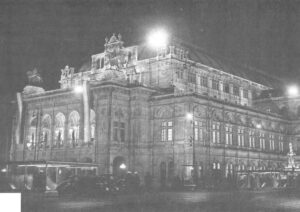June ‘70
**People only Jerusalem
**Osako
**Lu Wu
**Ayudhya
**Bangkok: food on the mind
**Tokyo: food on the table
**Hamburg: food for the doggy
Whoever invented that nonsense about the “true internationalism” of children, whoever first said that “children are the same the world over” must have been blind in both eyes.
With Coca-Cola signs dominating the entire inhabited universe, the only truly different and therefore characteristic sights the quick traveler gets a chance to see these days are the faces of children.
The “cute sameness of kids” is in the mind of the gusher. The real thing is beyond that belabored facade.
Children are people.
They are fat or hungry, energetic or lethargic, bright or stupid, ambitious or complacent, happy or depressed…
They are people and therefore different.
Those four pictures on the front page show four different groups of children, picked at random from different countries, different civilizations, different circumstances.
There is very little that’s similar about them. Physical size may just be the only clear possibility: they are little people and so there is everything that’s different about them.
Cavorting around the “people only” signs (which is to keep mules out) in old Jerusalem are two Armenian children. Caught in 20 centuries of ethnic wars, they are hated by Arabs, suspected by Jews, and rejected by Christians.
Are they the same, do they even give a remotely similar impression as the explosively affluent, cockily confident Japanese kids at the Osaka fair? Hardly.
Lu Wu is the border point between Hong Kong’s New Territories and Communist China. Is there something strange about the smile of that “typical” child with the baby on her back? Sure there is.
Unlike the “innocent smile of the universal child,” this one cost $1 HK (about 17¢ U.S.) and lasts only 500th of a second (at f.4) so that the entire busload may get its share. And woe is to the smart guy trying to snap that bread-earning smile free.
At Ayudhya, the old capital of Thailand, Buddhist monks sit silhouetted against the tropical sky, utterly without the lightening-fast commercialism and adult, grim fury of the successful photo model at Lu Wu… and yet, they are of the same age.
They are all children. Different, very different people.
Diversity in the same milieu: The different moods and responses of Thai children along the Chao Phya river…
**SAME ethnically, different in environment and development: Japanese children in Japan…
**…and the children of Japanese-Americans in Kona, Hawaii…
**…IN JAPAN–2…
**…IN KONA – 2…
**TRANSPLANTED AMERICANS…
**…near Jericho
**…at Bucharest airport
**…on a Ginza street
**CHILDREN…at play (Berlin)
**…at work (New Delhi)
**…watching the small ones (Hong Kong)
**…wondering (Teheran)
**A CELEBRATION in Romania…
**A SUNDAY AFTERNOON in Hungary…
**A FESTIVAL in Nikko…
**FROM THE THOUSAND FACES OF CHILDREN…
**…in Kowloon
**…in Haifa
**…in Nara
**…in Kealakekua
**…in Hamburg
**…near Ayudhya
**…in Koln
**…in Delhi
**…at a Bedouin camp near Hebron
**…on a Tel Aviv street
**…in Honolulu
**…in Athens
**…in Tokyo
Received in New York on June 22, 1970.
Mr. Gereben of the Honolulu Star-Bulletin is an Alicia Patterson Fund award winner who has recently completed his fellowship year. This article may be published with credit to Janos Gereben, the Honolulu Star-Bulletin, and the Alicia Patterson Fund.

